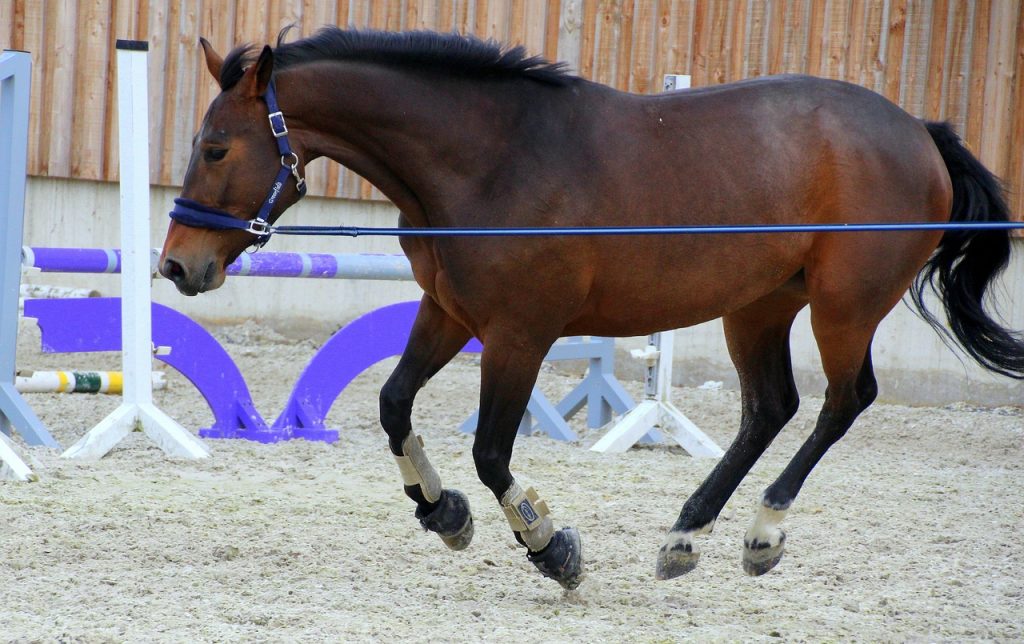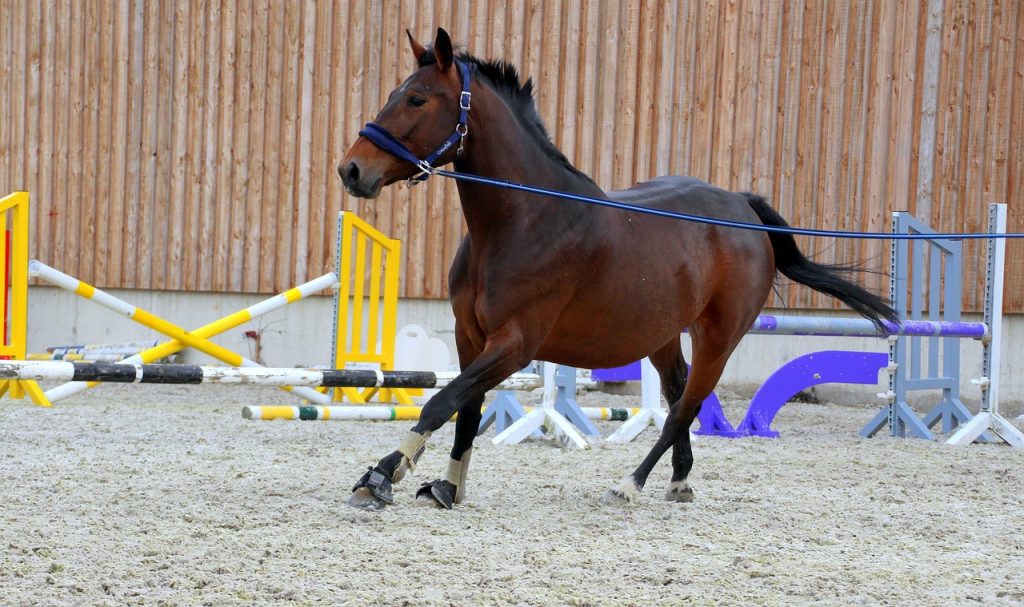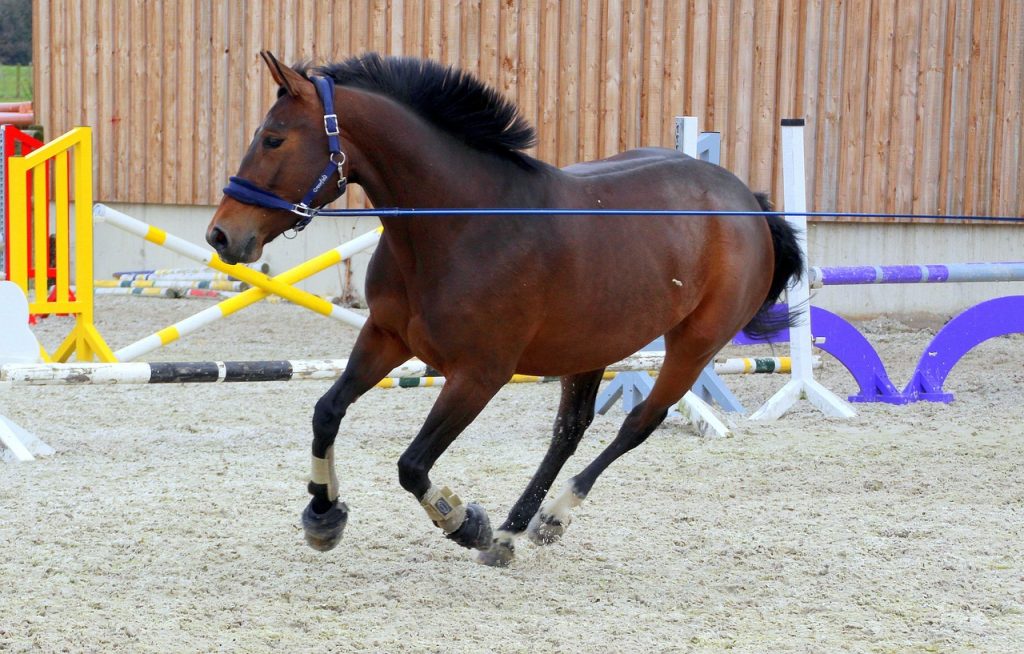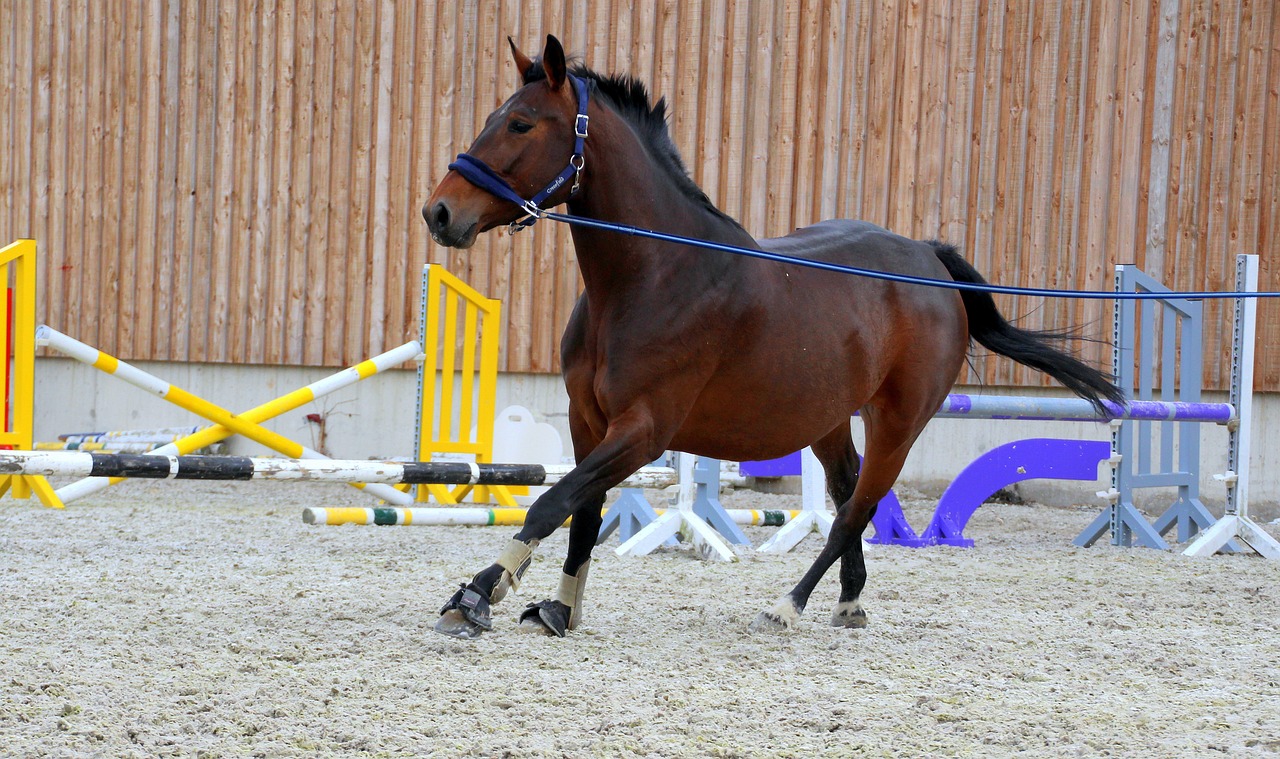So, you’re interested in the art of horse training, eh? Specifically, you’re seeking to become adept in lunging a horse, one of the foundational skills integral to a horse’s safety and appropriateness for different kinds of activities. This article brushes over the fundamental elements and procedures intrinsic to lunging a horse, outlining the crucial tactics you need to build a harbor of trust and reciprocal understanding with your noble steed. It’s all here, conveniently packed within an easy reading experience, waiting to help you blossom into a proficient horse handler.

This image is property of pixabay.com.
Understanding What Lunging a Horse Means
Definition of lunging a horse
When we talk about lunging a horse, we’re referring to a technique used in horse training where the horse moves around the handler in a circle at the end of a long line called a lunge line. The handler stands in the center of the circle, directing the horse’s movements from a distance.
Importance of lunging a horse
The value of lunging a horse can’t be overstated. It plays an important role in horse training, fitness, warming up before riding, and behavioral correction. Lunging teaches the horse to follow and respond to commands while providing them with mental and physical exercise.
What lunging a horse entails
In essence, lunging involves leading the horse on a circular track at varying paces, all under the control and direction of the handler at the opposite end of the lunge line. It requires mutual trust, understanding, and communication between the handler and the horse, as well as knowledge of horse behavior and body language.
Basics of Horse Behavior
Understanding horse behavior
A successful lunging experience relies heavily on comprehending horse behavior. Learn to appreciate that horses are prey animals and their responses are typically based on instinct. They are also social animals, requiring interaction and clear communication.
Interpreting horse body language
understanding horse body language is essential for effective lunging. Each twitch of the ears, stamp of a hoof, or swish of the tail can suggest something about the horse’s state of mind or physical well-being.
Building trust with a horse
Cultivating trust between you and your horse is a pivotal aspect of effective lunging. Be consistent, patient, and gentle in your approach. Remember, horses can sense fear, anger or any form of unease from their handler.
Safety Measures When Lunging a Horse
Using the correct lunging equipment
The right equipment is crucial for both horse and handler safety during lunging. The basic lunging gear includes a lunge line, lunge whip, and a lunge cavesson or bridle.
Creating a safe lunging environment
Ensure that the chosen area for lunging is safe, hazard-free, and has good footing. It should be enclosed to prevent the horse from running away and large enough to allow for a satisfactory circular track.
Ensuring personal safety while lunging
Your safety matters too. Don’t walk too close to the horse when lunging and avoid wrapping the lunge line around your hand. Wear a helmet and sturdy boots to protect yourself.
Selecting the Right Lunging Equipment
Choosing the right lunge line
The lunge line should be sturdy, long enough to allow the horse to move freely in a wide circle and have a good grip. The usual length is between 20 to 30 feet.
Use of the lunging whip
A lunging whip is not a punishment tool but a means of communication. Choose a whip that is light, long enough to reach the horse, and easy to handle. Traditional lunging whips are typically around 60 to 80 inches long.
Proper use of the lunge cavesson
The lunge cavesson, usually made of leather or synthetic materials, fits over the horse’s head and is engineered to distribute pressure more evenly across the horse’s head. It should fit well, not be too tight, and should meet the comfort needs of your horse.

This image is property of pixabay.com.
Preparing the Horse for Lunging
Conditioning the horse psychologically
It’s imperative to get your horse’s mind prepped for lunging. Start by establishing trust and ensure the horse is comfortable around you. Gradually introduce lunging in short, positive sessions.
Physical preparation of the horse for lunging
Physically, the horse needs to be in good health to lunge. Make sure they are properly warmed up before beginning the exercise.
Introduction of lunging equipment to the horse
Introduce the lunging equipment slowly. You can start by draping the lunge line and cavesson on the horse’s body until they are used to the feel of this gear.
Leading and Directing the Horse
Proper posture when lunging
Your body language communicates a lot to the horse. Stand tall, confident, and maintain constant eye contact with the horse. This communicates your intention and confidence to the horse.
Leading techniques
You lead the exercise by encouraging the horse to move forward on the circle. Use the lunge line, whip, and your voice to steer the horse, increase or decrease speed, and to stop.
Directing your horse in the correct direction
Being able to direct your horse correctly ensures a smoother lunging session. Point the whip towards the horse’s hindquarters to move them forward and bring it towards the shoulder to slow them down or stop.

This image is property of pixabay.com.
Common Lunging Commands
Voice commands
Voice commands are vital in lunging a horse. Use a confident and firm tone to give commands such as “walk”, “trot”, “canter”, or “whoa”.
Body language signals to communicate
Your body language goes hand in hand with voice commands. Gestures, movements, and positioning all play a part in directing the horse.
Use of the lunging whip for commands
The lunging whip assists in giving commands. It can be used to guide the horse’s movement, motivate the horse to move forward, or to halt.
Identifying Common Problems During Lunging
Overly energetic or aggressive horses
Some horses may react to lunging by becoming overly energetic or aggressive. Understanding the individual horse’s behavior is key to managing these issues.
Distraction and loss of focus
Horses can get distracted easily. Be persistent and consistent in your commands to keep their attention.
Discomfort or pain in the horse
If a horse shows signs of discomfort or pain during lunging, it is advisable to stop the lunging immediately and determine the cause.
Overcoming Lunging Challenges
Dealing with an unwilling horse
Uncooperative behavior from the horse can be a challenge. Be patient, use positive reinforcement, and avoid punishing the horse.
Handling a nervous or skittish horse
For nervous horses, it’s important to desensitize them to the lunging process gradually. Start with short sessions and gradually increase the duration as the horse gains confidence.
Managing a horse that pulls or resists
If a horse pulls or resists lunging, maintain a firm and steady hold on the lunge line. Positive reinforcement when the horse cooperates can also help alleviate pulling and resistance.
Progressive Training Techniques
Advancing to using riding aids
Once the horse is comfortable with lunging, progress can be made by introducing riding aids such as saddle pads, bridles, and saddles.
Incorporating lunging into a training program
Lunging can be an integral part of a balanced training program for a horse. It complements other exercises that improve the horse’s strength, balance, and agility.
Continued learning and improvement
Don’t stop learning and improving—there’s always room to better your understanding of your horse and perfect your lunging techniques. Staying current on horse behavioral studies and lunging methods can only benefit both you and your horse.
